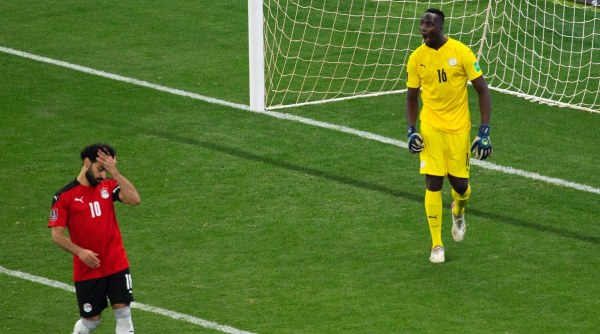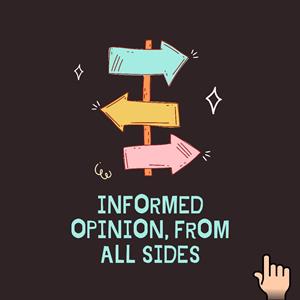Explained: Why laser pointers are in the spotlight after Egypt’s controversial World Cup playoff defeat
During Egypt’s World Cup qualifier playoff against Senegal, spectators aimed laser beams at Mohamed Salah as he stepped up to take a penalty. He completely missed the target and the North African side lost 3-1 via tie-breaker to Senegal.
 Mohamed Salah before his penalty miss against Senegal (Photo credit: ESPN)
Mohamed Salah before his penalty miss against Senegal (Photo credit: ESPN)At the 2014 World Cup, after Russia suffered an embarrassing exit in the group stage following a 1-1 draw with Algeria, their manager Fabio Capello had little doubt about the reason – a laser beam.
Capello pointed out that when Algeria took the free-kick that led to the goal, a green light beam was shining on the face of the Russian goalkeeper, Igor Akinfeev, which distracted him.
“(Akinfeev) was blinded by the laser beam,” Capello fumed after the game. “There are pictures. You can see that in the footage. This is not an excuse, it is a fact. There was a laser.”
Akinfeev was undoubtedly targeted by laser pointers from the stands. But what he experienced wasn’t even a fraction of what Mohamed Salah had to endure when he stepped up to take a penalty during the second leg of Egypt’s World Cup qualifier playoff against Senegal on Tuesday.
So powerful was the laser beam, aimed by spectators in the stands, that Salah, whose whole face was bathed in green, resembled a character out of film on the paranormal. The Egyptian forward completely missed the target as the North African side lost 3-1 via tie-breaker to Senegal, who thus qualified for this winter’s World Cup.
Senegal, who lost the first leg 0-1, were the dominant of the two teams in the do-or-die clash and had erased the one-goal deficit. However, the scores remained level even after extra time, forcing a penalty shootout. While the African champions prevailed over Egypt once again, the penalties became controversial after the Senegalese fans, who had snuck in laser pointers, tried to distract the visiting players at every possible opportunity.
What are laser pointers and are they harmful?
They are small hand-held devices that emit sharp and narrow laser beams of visible light. According to the website laserpointersafety.com, they can harm the eyes when projected from close range, typically within a few metres. But when shone from the stands on a player on the field, the light “would not be steady enough to allow dangerous heat to build up in the eye”. This, it says, “goes for both visible green light, and any non-visible infrared light”.
However, even when the laser is beamed from a distance, the brightness can cause irritation, laserpointersafety.com says. “The worst effect would be glare or brief flash-blindness, like when a camera flash goes off close to a person’s face,” it says.
In fact, people have been arrested for projecting laser beams at pilots while riding a plane or a helicopter.
 Egypt’s Mohamed Salah, left, reacts after failing to score his penalty kick against Senegal’s goalkeeper Edouard Mendy during the World Cup 2022 – Africa playoff soccer match between Senegal and Egypt at at Stade Me Abdoulaye Wade stadium in Dakar, Senegal, Tuesday, March 29, 2022. (AP Photo/Stefan Kleinowitz)
Egypt’s Mohamed Salah, left, reacts after failing to score his penalty kick against Senegal’s goalkeeper Edouard Mendy during the World Cup 2022 – Africa playoff soccer match between Senegal and Egypt at at Stade Me Abdoulaye Wade stadium in Dakar, Senegal, Tuesday, March 29, 2022. (AP Photo/Stefan Kleinowitz)
Can they act as a distraction, even from a distance?
Yes. According to the author of the ‘Laser Bible’, Samuel Goldwasser, the legal limit of the green laser pointer is 5 milliwatts – or 5,000th of a watt. While the limit varies from country to country, there have been instances in the past, according to Input, where the pointers have been up to “200 times above the legal limit” for green lasers. “When it’s in a concentrated beam it can be very, very bright,” Goldwasser was quoted as saying by the magazine.
But are they allowed inside stadiums?
No, they are not. According to FIFA Stadium Safety and Security Regulations, items such as laser pointers, which “could distract the players and/or officials”, are prohibited. If spectators are still found using them, the teams are liable for punishment and may be subject to disciplinary measures, according to article 16 of FIFA’s disciplinary code.
Have there been instances like these in the past?
The scale at which the laser lights were beamed on Tuesday during the Senegal-Egypt game has rarely been seen before. But it’s uncommon for fans to use it as a distraction tool for their opponents. Most recently, UEFA had fined England’s Football Association 30,000 euros after their supporters aimed laser pointers at Denmark goalkeeper Kasper Schmeichel while trying to save a penalty during the Euro 2020 last year.
The trend is common in various football leagues, including the Champions League, where Lionel Messi and Cristiano Ronaldo have been targeted on numerous occasions.
How have teams reacted to the incident?
While no team directly commented on this issue, the Egyptian football association said their players, particularly Salah, were subjected to racist abuse and attacks.
“The Egypt national team have been exposed to racism with offensive signs in the stands against the Egyptian players in general, and Mohamed Salah in particular,” the Egyptian FA said in a statement.
“The crowd also intimidated the players by throwing bottles and rocks at them during the warm-up. The Egyptian group’s buses have also been exposed to assaults that led to broken windows and injuries; filed with pictures and videos as proof in the complaint submitted.”
Newsletter | Click to get the day’s best explainers in your inbox
- 01
- 02
- 03
- 04
- 05







































